Hello,
Welcome to today’s edition of Kitchen Projects. It’s COOKIE TIME.
I’m so looking forward to sharing some cookie insights with an alternative line-up of thick, thin, chewy, crunchy and everything in between. I’ll be deep diving all the theory in this newsletter with half the recipes included. The other half (fake levain and crunchy chunky!) will be over on KP+.
What’s KP? Well, Kitchen Projects+ aka KP+, is the level-up version of this newsletter. It only costs £5 per month and your support makes this newsletter possible! By becoming a member of KP+, you directly support the writing and research that goes into the weekly newsletter as well as get access to lots of extra content, recipes and giveaways, including access to the entire archive. I really hope to see you there:
Love,
Nicola
Did someone say Cookies?
All things baked and beautiful, all cookies great and small. Crispy, chewy, gooey, crunchy, the chocolate chip cookie lives on a sliding scale that you can adapt exactly to your taste. There are no wrong answers when it comes to how you like your cookie (though I’m sure people would disagree) and over time I’ve come to accept there’s really no such thing as a perfect chocolate chip cookie. I dated someone for a long time who always used to talk about not wanting to ‘yuck someone’s yum’. Although I always thought this sounded vaguely disgusting, I think it works here: I’m not here to yuck your cookie yums.
And there’s a lot of cookie yums already out there. Search ‘cookie recipe’ into google and you’ll get 4,090,000,000 hits. That’s almost three times as many as you get for brownie (1,560,000,000 hits) and 20% more than you get for ‘cake recipe’ (3,380,000,000). It’s safe to say that there are, truly, millions of cookie recipes and deep dives, with some 1,100,000,000 results for ‘best’ chocolate chip cookies. So where do we begin? With such a humble and “simple” bake, it’s extraordinary to see the sheer amount of coverage these little round things get.
One of the best resources out there for cookie science is undoubtably Kenji Lopez Alt’s cookie deep dive on Serious Eats, where he details his 1500+ tests to get the ‘perfect’ cookie. This is definitely the cookie bible the internet needs and I found it to be incredibly helpful. Thank you to Kenji! Whilst Kenji is solving for all variables to find his ultimate middle ground, I was in search of two specific styles (and ended up finding two more along the way!) which we’ll get into now. Today we’ll be covering (half on main, half on KP+) some alternative cookie styles to add to your repertoire.
Right, let’s get into it
A bit of history
Have you heard the story of how cookies were invented a million times? Even if it is just Nestle marketing spin, this is how the tale goes: The chocolate chip cookie was invented in 1938 by Ruth Wakefield, the proprietor of the Toll House Inn, a popular hotel in Massachusetts. One day, and this is where the story gets a bit dodgy, Ruth whipped up a batch of her butterscotch cookie dough and added small chocolate pieces. Ruth thought the chocolate would melt and disperse evenly through the dough when it baked. Much to her “surprise”, the chocolate remained intact during the bake. The cookies, obviously, were an immediate hit. We’re still talking about it 85 years later after all.
The veracity of this story is unclear. I personally believe Ruth is a baking God and knew exactly what she was doing in creating this now iconic cookie and this story is an example of weird baking themed misogyny/female talent erasure that almost certainly needs to be re-written to celebrate Ruth’s genius. Either way, Ruth’s recipe was printed on the back of the Nestle packets of chocolate chips titled ‘Mrs Wakefield’s Toll House Cookie’. This recipe eventually became known simply as ‘Toll House Cookies’ and is still the most famous cookie recipe in the US today.
The original recipe, of course, has been tweaked over the years. Over time, it has been adapted. A turning point in the life of the chocolate chip cookie was in the landmark NY times article and the publication of the Jacques Torres formulation, which saw the butter and eggs lowered, resulting in a gooey centered cookie which didn’t spread as much and was much richer to eat. A lot of recipes focus on this lower egg, lower butter formulation now
The different cookie species
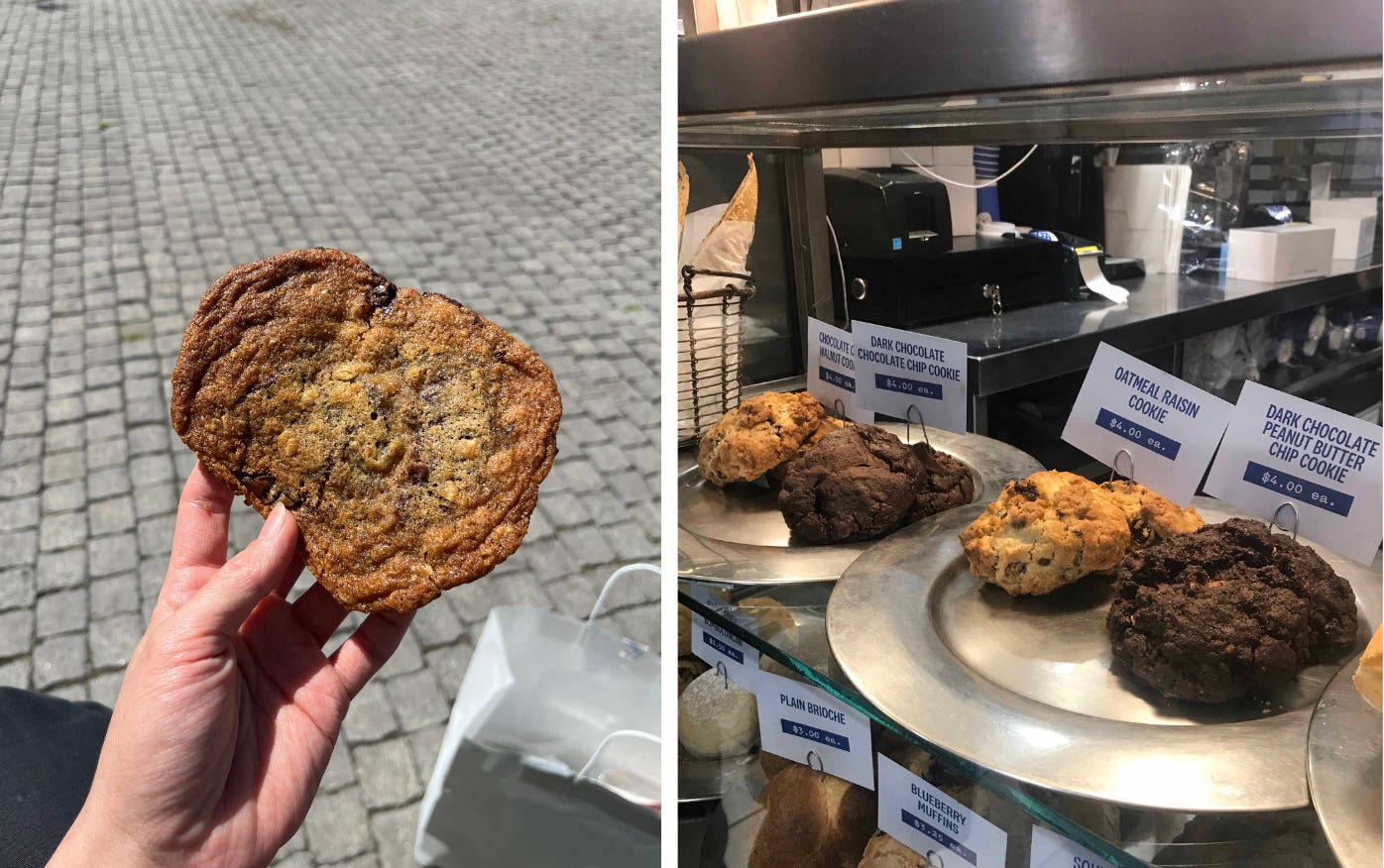
I love watching the cookie trends change and pinpointing different ‘species’. In the US, who I believe sets the trends for cookies, the East Coast chocolate chip cookie crown no doubt goes to Levain bakery, a shamelessly fat and much copied craggy megalith of a cookie. I first tried Levain in January 2020 and ever since I’ve tried to recreate the recipe every few months. Spoiler alert, I’ve finally landed on a formulation I’m really happy with, over two years later! Perhaps absence has made the heart grow fonder. Or perhaps more desperate? Either way it has filled a very chunky hole in my heart.
When I traveled to LA recently, it was the polar opposite - the giant thin & crispy cookie was definitely on the throne, often with oats involved. I’ve always been a huge fan of the thin crispy cookie - ultra butterscotchy and strong with the maillard reaction, to me they are the ideal snack cookie. Unlike a thicker cookie, which always feels very decadent to me, it literally always feels like the right time to enjoy a crispy one. My first experience with the thin and crispy cookie was a bite of Tates, a grocery/drug store cookie brand in the US. I now fill my suitcase with them. I’ve tried lots of times to recreate them and I think I may have finally nailed it.
There are many lessons to be learnt in cookies. A chocolate chip cookie is endlessly tweakable and all recipes live within a spectrum. For this week's KP, I drew up some battle lines and thought about the specific criteria I wanted to nail. From one extreme to another, I think the scale goes: Thick, cakey, chunky, soft, chewy, crunchy, crispy, thin. Most modern recipes live within the ‘soft chewy’ middle section. Testing this week I realised how sensitive cookies are - if I started weighing haphazardly, batches would turn out completely differently. I swapped brands of brown sugar inbetween tests and the cookies were slightly different - this is to say, we are all working with different ingredients and a reminder that if things don’ quite work out when you’re baking, it’s not always your fault!
So, let me introduce you to the family. Although this chart is a little bit simplistic, it gives an overview of what to expect. It *must* be noted that there is, of course, a little bit of variation within each cookie (e.g. the crust of the ‘thick chunky soft’ cookie is crunchy) so please read the written description for more detail!
Crispy Crunchy aka fake tates (top right)
Much like the aforementioned tates cookies, these are thinner, crispy cookies with a rippled look with delicious butterscotch flavour. The middles may have a slight chew depending on how long you bake them for, plus the hand chopped chocolate stays a bit fudgy.
Crispy Chewy (bottom right)
Ultra thin, crackly and gooey-ly chewy cookies that spread like crazy with crisp edges - really fun to eat. You could bend it in half and put ice cream in the middle!
Crunchy Chunky (top left)
Ahhh, these were a total mistake that I came across whilst trying to locate the thick and chunky levain cookies. Packed with mix-ins and baked dark with a little trick at the end!
Thick, Chunky aka fake Levain (bottom left)
This is my faux Levain cookie, thick and gooey in the middle (when warm) and crisp on the edge. A winner!
Understanding ratios / an overview
The more recipes I have developed, the more I rely on ratios to understand what is going on in our baked goods. By far the most reliable way of displaying and understanding this info is through a spreadsheet! I know thinking about recipes in this way might feel intimidating at first, but I’m here to guide you In the chart below, you’ll be able to compare and contrast both the bakers % (relationship between ingredients in comparison to flour) as well as the overall %. Though it might seem like a lot of into to take in, i’ll share the key points beneath:
So, I think the key takeaways here are as follows. I’ll be referring to the bakers % in these statements, btw.
The total sugar % increases with the amount of spread and chewiness - it is absolute lowest at 75% in the thick chunky cookie and highest at 200% in the crispy chewy cookie.
The total mix-ins are most extreme with the thicker crunchy cookies - we’ll cover the role of this in more detail below.
The hydration is lowest in the thick chunky cookie at 21% and increases all the way to 46% in the crispy chewy cookie.
The butter, which we usually attest to being responsible for spread, is lowest in the thick and chunky at 42% and increases to 84% for our crispy crunchy. The crispy chewy deviates from the trend and actually has a relatively ‘low’ butter content that is in line with the thicker cookies which really tells us that the sugar % is actually highly responsible for the level of spread and final thickness and texture.
The balance of sugars is also important - the thick chunky cookies have equal brown/white sugar whilst the crispy chewy cookies have a majority of brown sugar, the molasses being responsible for the moistness and thus the chewiness. The crunchy cookies have a higher proportion of white sugar to brown sugar thus the dark colour comes from being well baked - a combination of maillard reaction and caramelisation
With the chewy cookies higher brown sugar %, this also means there is more acidic compounds for the baking soda to react with, resulting in a higher initial lift - since there is a low proportion of starch and egg to ‘set’ and capture the CO2, the cookie falls dramatically resulting in a low wide chewy dream with crackly tops
Relationship with Mix-ins
I’ve always thought of the relationship between the base dough to be the most important and have always seen the mix-ins as ‘extras’. Maybe this seems obvious to everyone else, but I realised this week how important the interaction between the mix-ins and the dough itself is. The mix-ins break-up the structure of the dough and behave differently in the oven. Nuts, of course, don’t melt or spread, which means they are useful in creating a chunky, packed texture. Chocolate, as we know, melts and reforms, slightly fudgier than before, but unlike nuts, it does contribute to the spread effect. As a result, my thinner cookies had a lot less mix-ins, leaving the dough formulas to really speak for themselves. The thicker cookies, on the other extreme, have so much mixed in that the dough is more like glue for chocolate/nuts than anything else, which is how it should be. I found oats to be a surprisingly useful interruptor, too! I love the taste but their non-gluten forming abilities and their physical disruption of the structure of the cookies contributes to a flavourful and fun to eat dough.
Chocolate chips
No shade on those drop like chips, but I think - at least in the UK - it’s quite find to source high quality chocolate in that shape. Fortunately I think you get the most exciting texture and eating quality by chopping up the chocolate yourself. As well as giving you ultimate control of the flavour, the irregular sized pieces, including that elusive chocolate dust™ is unparalleled. The only problem with handchopping the chocolate is the variation between batch to batch - you can never get it exactly the same. The only advice here I have is to embrace the variations!
Resting, it’s not for everyone
We’ve all got quite used to the prolonged cookie schedule that includes overnight resting. Two things happen during this period. Firstly, the butter firms up which means we put our cookies into the oven at fridge temperature. This means there will be less spread because by the time the butter has melted, the starches and egg will have begun to harden, setting the cookies final shape.
Overnight - or several overnights - resting allows the flour to fully hydrate - the dough will appear drier - and, over prolonged periods, the starches and the proteins in the flour to break down, resulting in more complex flavour compounds once the dough bakes. Though this works, and is perhaps essential for some formulations, resting isn’t always a good thing.
In fact, for my crunchy-chewy cookies, the rested cookies were a bit thicker and all that time to absorb the extra liquid resulted in MUCH less crunch. Although they were still delicious and tender, these are definitely cookies that must be made and baked on the same day to retain the best crunch factor. Plus, after the rest, they lost a little bit of their ripple look, which I loved. As well as this, I don’t feel the flavour was significantly improved with the rest:
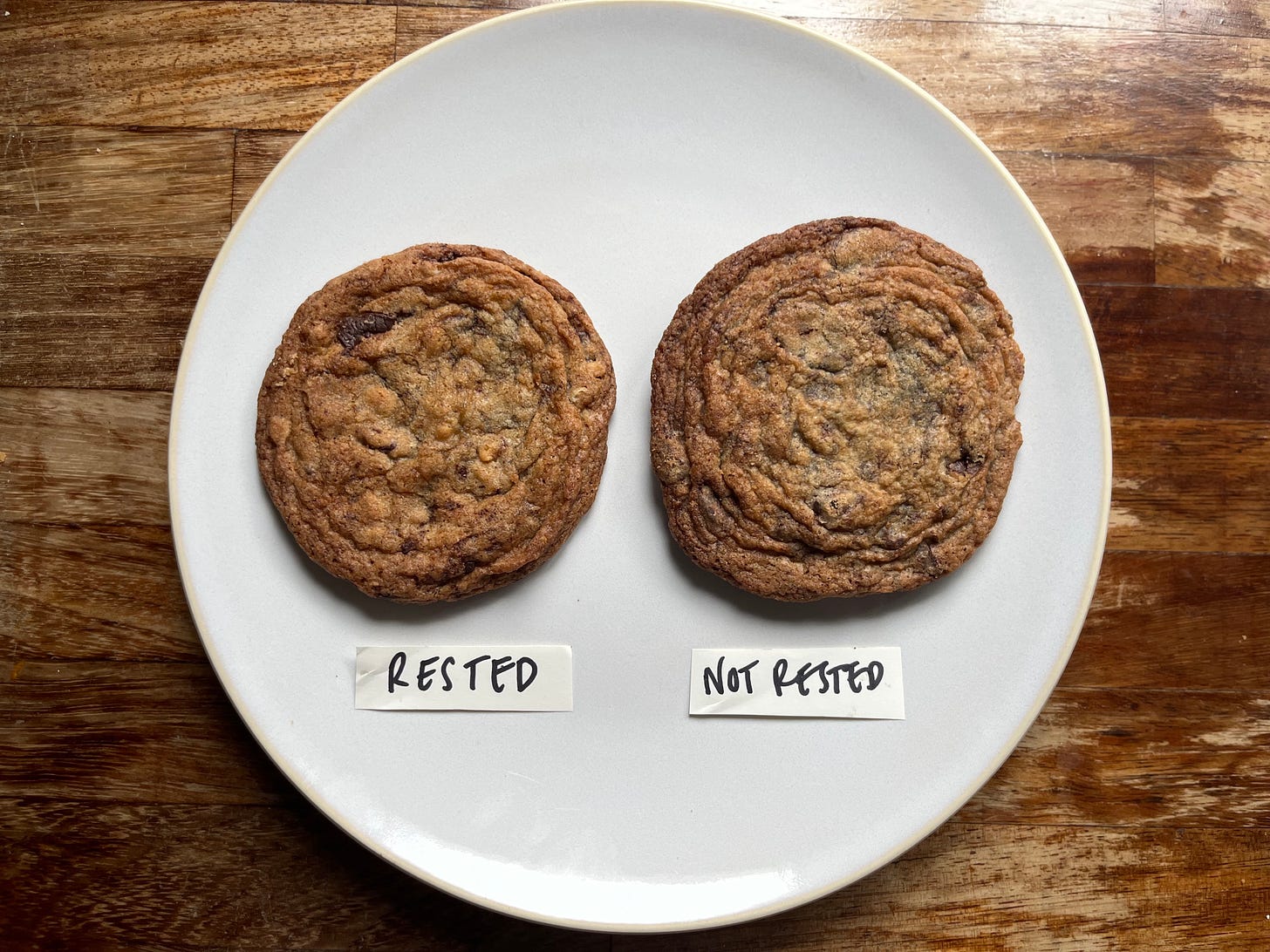
As for my thin and chewy, the rested cookies, thanks to the broken down proteins & starch thing (remember in bagels last week how we discussed how baking soda and an alkaline environment means better browning?) baked much darker. Again, not ‘worse’ per se, but I actually preferred the unrested dough quite a lot.
For the thicker cookie formulations, I found the rest was neutral but didn’t make a lot of difference. The flavour was perhaps… a bit better? But since my thick cookies are pretty much reliant on the immense level of mix-ins for flavour, you don’t really notice much improvement in the dough from resting. Shape wise, since these formulations have a lower butter content, there isn’t a lot of benefit from reducing the spread since there is less butter to er… spread!
Raising agents
Although you can play around with the raising agents, I found this unnecessary. I stick to just baking soda in my cookies - this gets you the best results from browning and since there’s enough acidity from the brown sugar, you get enough of a rise reaction. Here’s the acidity chart from the 3pm oat biscuits to remind you of the pH situation with some standard biscuit ingredients:
Shaping matters
Each of today’s cookie recipes takes on a slightly different shape. The thin cookies are balled as standard, but the thicker cookies need a little more care. I watched the adorable levain bakery BTS video from the early 2000s (well worth a watch, Pam and Connie formidable women!) and can’t put it better myself - for the best looking cookies, in the words of Connie, you need to ‘keep it light and airy, no baseballs’. Watch in the video how they keep the surface of the cookies rough! For the crunchy chunkies, I found the best results were shaping the cookie dough into a burger patty style shape - this gave the best spread and reveals the most mix-ins, key for the look!
Ok, let’s make them!
Looking for the crunchy chunky and chunky thick aka fake levain cookies recipe? Click here!
Crisp and Crunchy cookies
Grab a bowl, pour yourself a glass of milk and go from having no cookies to having cookies in less than an hour. Oats are optional, I think they taste really nice, but you can ditch them and you don’t have to replace with anything else in the recipe. Although I prefer these cookies baked on the same day, you can leave overnight in the fridge - they’ll be a bit puffier and thicker when you bake them the next day so won’t be as crispy, only on the edges. Either way, make sure you bake these through properly for max crispness.
Makes around 9 cookies at 70g per cookie
110g butter
55g light brown sugar
120g caster sugar
55g whole egg
130g plain flour
20g oats (optional)
3g baking soda
2-3g flaky salt
135g hand chopped chocolate, different sizes welcomed!
Method
Pre-heat oven to 170c fan
Cream butter with sugars until well combined but not aerated - it should look a little fluffy
Emulsify in the egg, scraping down as needed to make sure its homogenous
Sift the dries together then fold through the butter/egg mixture
Finally stir through the chocolate
Form into 70g balls - they can be rough! They spread quite a bit so leave room
You can chill the dough overnight if you like but note they may not be quite as crunchy (but maybe you like that!)
Bake for 12-14 minutes. Sprinkle with a little salt before enjoying. They continue to harden as it cools.
Crisp ‘n’ Chewy cookies
A high proportion of sugar to all the other ingredients keeps these cookies ultra bendy and chewy. It’s pretty much impossible to cream that much sugar with such little butter so we will whisk the egg, sugar and butter together. I’ve left the oats in here because I love the flavour and little extra bit of texture within the chewiness, but you could omit them - just increase the flour by 10g to give it a bit more body (but I VOTE OATS!)
Makes 8 cookies at 65g-ish per cookie
55g butter
140g light brown sugar
60g caster sugar
55g whole egg
100g flour
3g baking soda
2g-3g flaky salt
20g oats (big ones are nice, not flaked!)
85g hand chopped chocolate
Method
Pre-heat oven to 160c fan
Cream butter with egg and sugars until well combined and smooth, it will be a little it fluffy
Sift the dries together then fold through the butter/egg mixture
Finally stir through the chocolate
Form into 70g balls - they spread quite a bit so leave room. It might be quite soft so you can also spoon onto trays. If its so soft it seems impossible to work with, just stick it in the freezer for 5-10 mins to firm so you can handle it
You can chill the dough overnight if you like but note they bake very dark
Bake for 12 minutes until dark golden on the edge but still pale in the middle - they will be spread out and crackly and drop drastically as they cool. Sprinkle with a little salt
Keep the cookie party going by Looking for the crunchy chunky and chunky thick aka fake levain cookies recipe? Click here! to read KP+




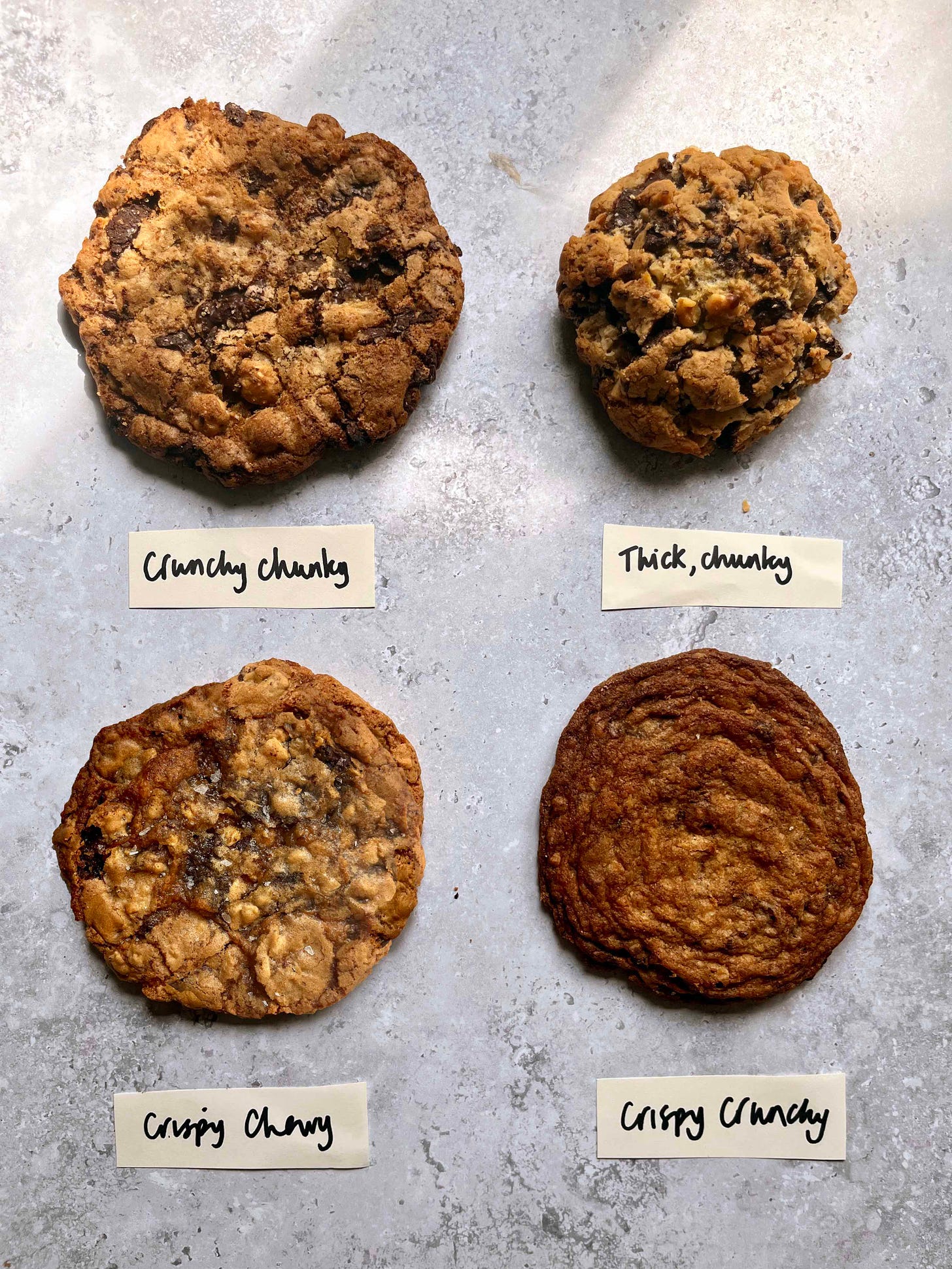

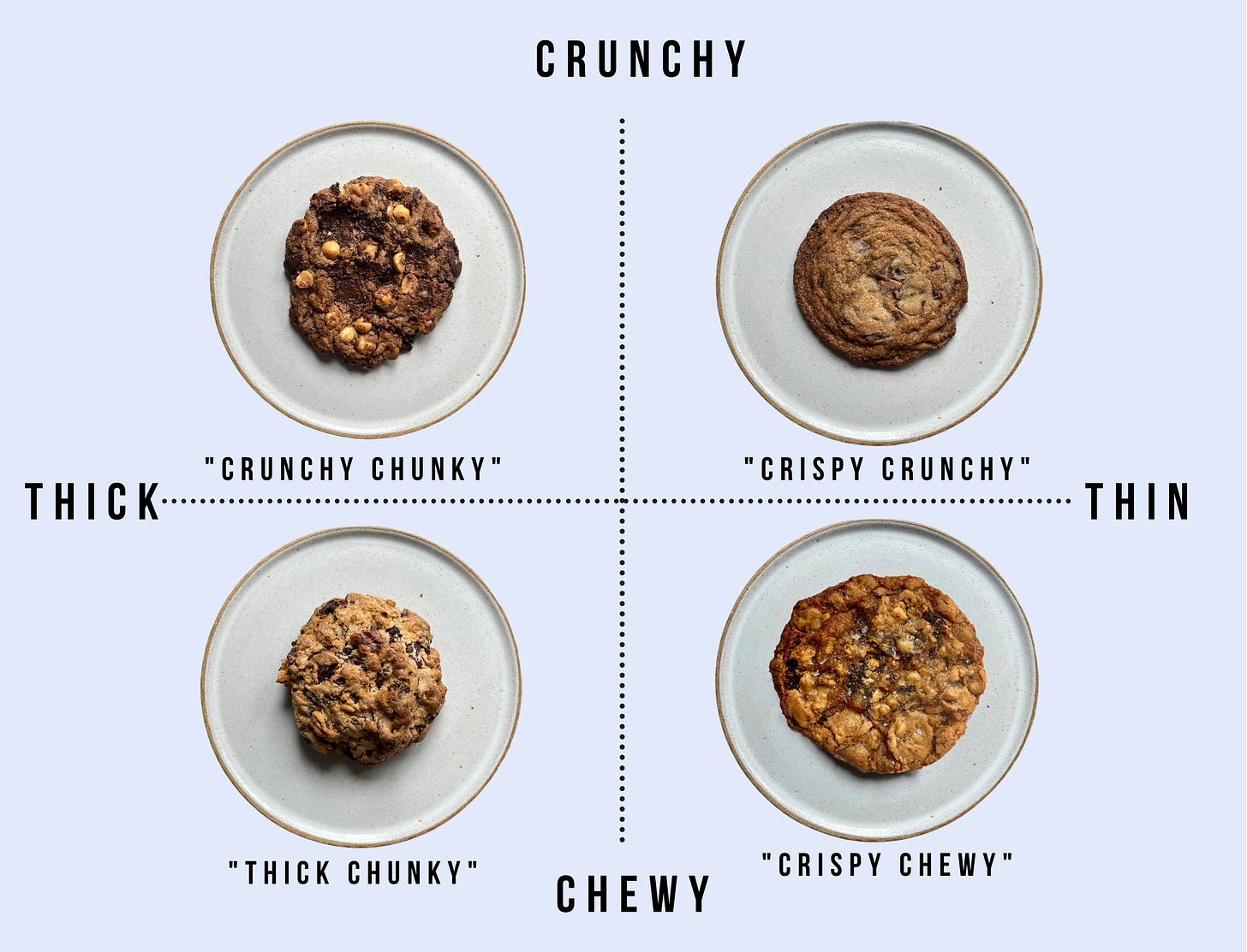
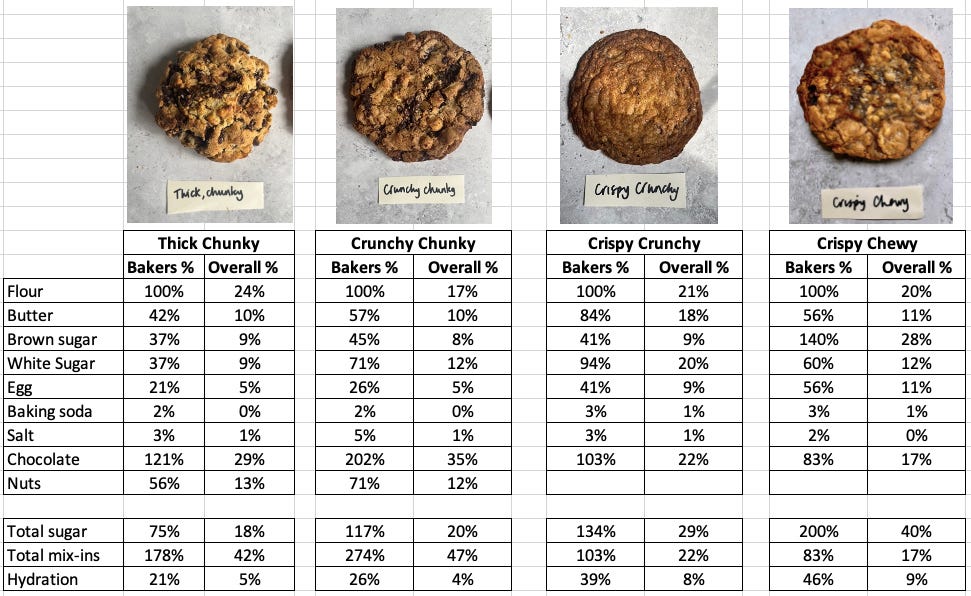
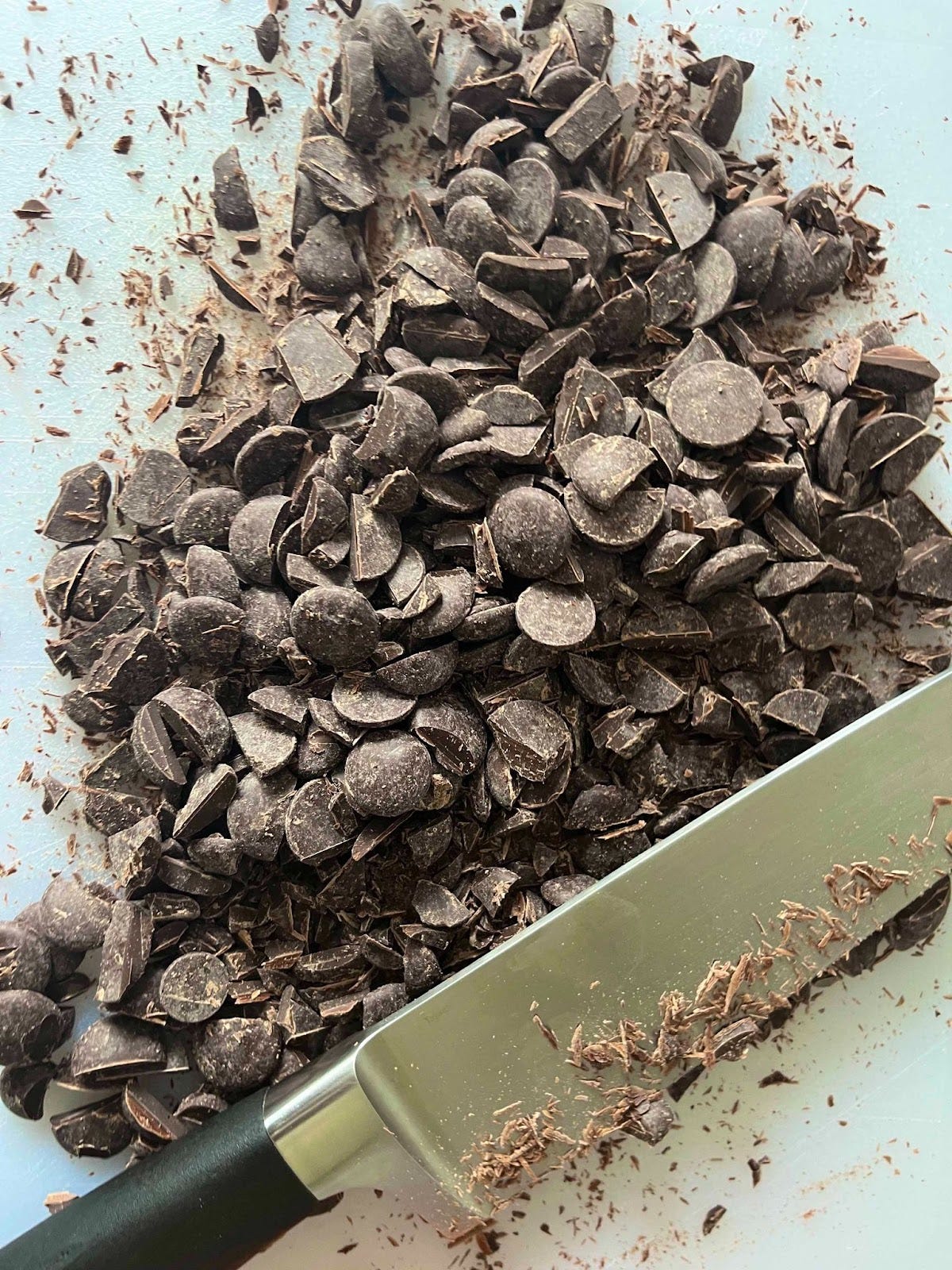
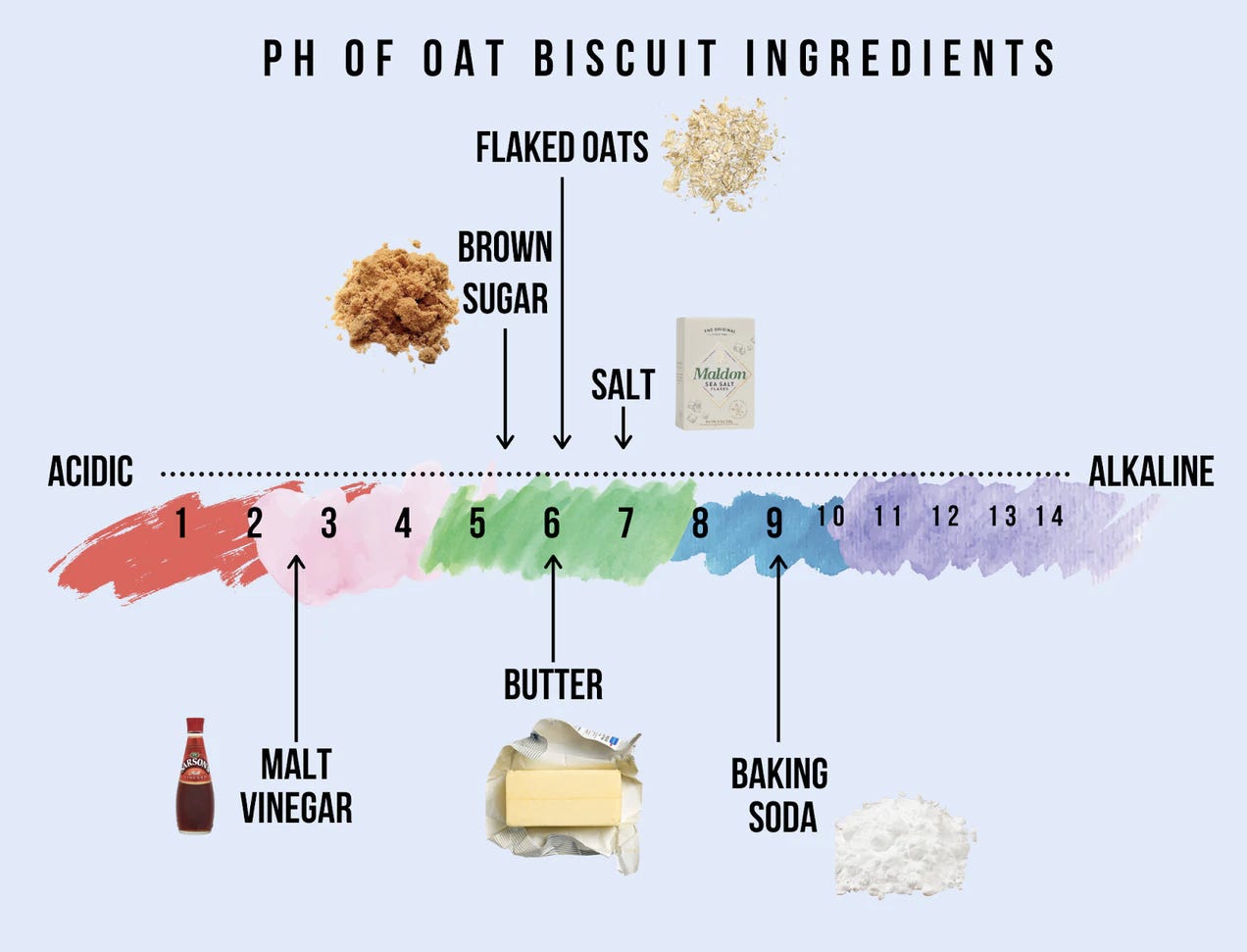
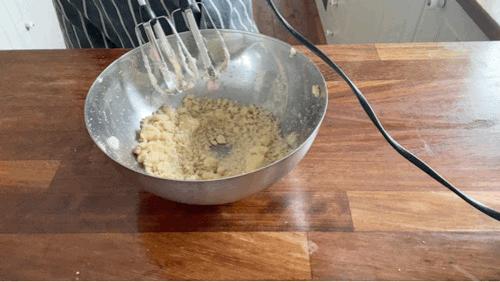
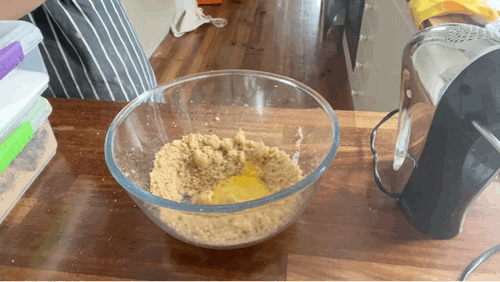
Any thoughts on the best chocolate to use for this?
Hi Nicola! If I am making brown butter chocolate chip cookies, should I calculate butter based on weight after water has evaporated? So when trying to make my bakers %, should 1 stick be 85-90 grams instead of 113?